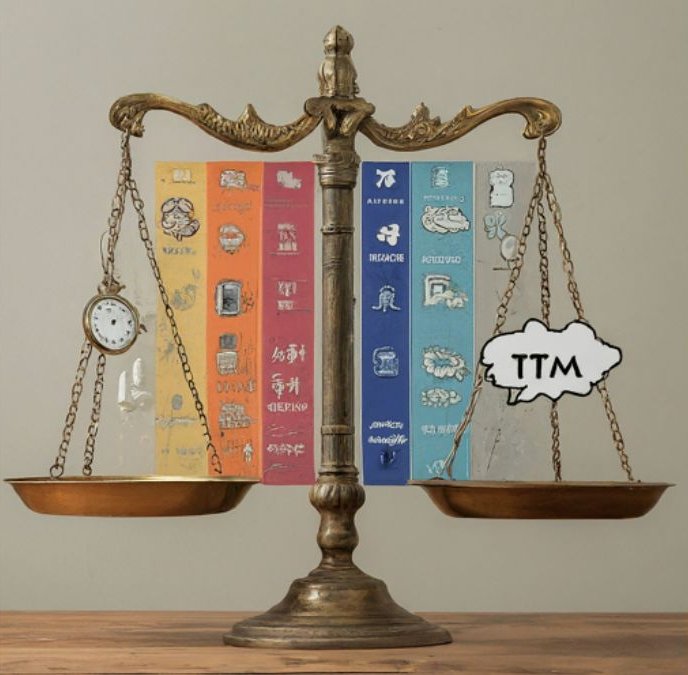In the age of instant messaging and social media, acronyms and abbreviations have become an integral part of online communication. While they can save time and space, they can also lead to confusion, especially for those unfamiliar with their meanings. One commonly encountered abbreviation that frequently perplexes individuals is “TTM.”
Table of Contents
What Does TTM Mean in Text?
TTM simply stands for “talk to me.” It’s a casual way to invite someone to start a conversation or express your desire to chat. Here are some examples of how TTM is used in texting:
- “Hey, I’m bored. TTM?”
- “Finished with work? TTM if you’re free.”
- “Feeling down, could use a friend. TTM “
The context in which TTM is used can provide further clues about its meaning. For instance, if you receive a text from a friend saying “TTM” after a long period of silence, it likely indicates they miss you and want to catch up. Conversely, if someone you barely know sends you “TTM” out of the blue, it might be a more general invitation to initiate a conversation.
Variations and Similar Abbreviations
It’s important to note that TTM has a few close relatives in the world of texting abbreviations:
- TTML: Talk to me later
- TTMN: Talk to me now
- DTTM: Don’t talk to me
As you can see, these variations add a specific timeframe or intent to the basic “talk to me” message. Understanding the context is crucial to interpreting these variations accurately.
Beyond the Meaning
While abbreviations like TTM can be convenient, it’s essential to be mindful of their potential drawbacks. Using excessive abbreviations can hinder clear communication and make your message unclear, especially for older generations or those unfamiliar with internet slang. Additionally, relying heavily on abbreviations can affect your writing skills and limit your ability to express yourself effectively.
Remember: Clear and concise communication is always key. If you’re unsure whether someone will understand an abbreviation, it’s best to err on the side of caution and write it out in full.
The Rise of Texting Abbreviations
The use of abbreviations in texting has exploded in recent years, driven by several factors:
- Convenience: Abbreviations save time and effort when typing on a small mobile screen.
- Informality: Texting is a casual form of communication, and abbreviations reflect this informality.
- Community building: Using common abbreviations can create a sense of belonging and shared understanding within online communities.
However, it’s important to recognize the potential downsides of overusing abbreviations:
- Misunderstandings: Abbreviations can be misinterpreted, especially by those unfamiliar with their meaning.
- Generational gap: Older generations may not understand certain abbreviations, leading to communication barriers.
- Impact on language skills: Excessive reliance on abbreviations can hinder the development of strong writing and communication skills.

Finding the Balance
So, how can you strike a balance between using abbreviations for convenience and maintaining clear communication? Here are some tips:
- Use abbreviations sparingly: Only use abbreviations that are widely understood and relevant to the context of your message.
- Consider your audience: If you’re unsure whether someone will understand an abbreviation, err on the side of caution and write it out in full.
- Be mindful of formality: In formal communication settings, it’s best to avoid using abbreviations altogether.
Understanding Common Texting Abbreviations
While TTM is just one example, there are countless other abbreviations used in texting. Here’s a brief overview of some common ones:
- LOL: Laughing out loud
- BRB: Be right back
- OMG: Oh my God
- IDK: I don’t know
- BTW: By the way
- IMHO: In my humble opinion
- NSFW: Not safe for work
- TMI: Too much information
Remember, this is not an exhaustive list and new abbreviations are constantly emerging. It’s always best to err on the side of caution and clarify any abbreviations you’re unsure about.
The Future of Texting Abbreviations
As technology continues to evolve and communication styles adapt, the use of abbreviations in texting is likely to continue. However, it’s important to use them thoughtfully and responsibly to avoid misunderstandings and ensure clear communication.
Conclusion
In the fast-paced world of online communication, acronyms like “TTM” (talk to me) have become commonplace. While they offer convenience and informality, it’s crucial to use them strategically to avoid misunderstandings and maintain clarity.
Remember, effective communication is key. Use abbreviations judiciously, considering your audience and context. When unsure, opt for clarity and write things out. By striking a balance between convenience and understanding, you can ensure your message is received loud and clear in the ever-evolving world of texting.
This article serves as a springboard for further exploration. As new abbreviations emerge, stay curious, keep learning, and prioritize clear communication above all else.
FAQs: What Does TTM Mean in Text?
Q: Where is TTM used?
TTM can be used on various digital platforms, including:
- Text messages
- Social media platforms like Snapchat, Twitter, and Instagram
- Online forums and chat rooms
- Instant messaging apps
Q: Are there any other meanings for TTM?
While “talk to me” is the most common meaning, TTM can also have other less frequent interpretations depending on the context. These include:
- Talk too much: This meaning is less common and usually used in a playful or teasing way.
- To the moon: This is primarily used in cryptocurrency communities to express bullish sentiment about a particular coin.
Q: Is it appropriate to use TTM in all situations?
While TTM is generally considered a casual abbreviation, it’s best to use your judgment depending on the context and your relationship with the recipient. It might not be suitable for formal communication or with someone you don’t know well.
Recommended Reading: What Does Igh Mean in Text? Understanding the Slang Term






